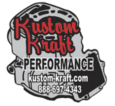Nikasil Plating
How do you know when your cylinder needs to be re-Nikasiled?
Sometimes it’s not that easy to tell, but usually, you can tell by looking at the cylinder walls. If you can see scratches or chips that are a sure indication that it’s time to have your cylinder re-plated. If you can’t see any wear or damage that doesn’t necessarily mean your cylinder is in good condition. The inside of the cylinder has to be exactly round (to with-in specs) to perform properly. This can only be accurately checked with a dial bore gauge. They can measure to with-in one ten-thousandths of an inch. The Nikasil plating that’s on the walls of your cylinder is only a few thousandths of an inch thick but is very hard. It wears extremely well as long as everything is tight and sanitary. If you maintain your engine as the factory recommends it will last for years. However, we all know how easy it is to suck it full of water or dirt or maybe run it low on oil or some other mistake you’ll be needing our service. The Nikasil plating, or coating as its sometimes referred to, will have to be stripped and re-plated.
Cylinder Replating
It’s not always obvious when you need a new Nikasil plating for your cylinder. Sometimes you really just can’t tell at all. Sometimes you won’t be able to notice any damage or wear on your cylinder walls. But that doesn’t mean that you don’t need to have your cylinder re-plated.
How Can You Tell You Need Cylinder Re-Plating
For your cylinder to perform properly, the inside of the cylinder must be exactly round, or at least to be within the required specifications. You won’t notice this just by looking at the cylinder. But in some instances, you may be able to see some chips and scratches on the plating. That’s a sure sign that you need to have your cylinder re-plated.
In general, you have to check the cylinder with a dial bore gauge to be absolutely sure, as this can give you measurements that are accurate up to within 0.0001 of an inch. That makes it a suitable instrument for Nikasil plating, which is only a few thousandths of an inch thick.
The thing with the Nikasil plating is that despite how thin it is, it’s actually quite sturdy and hard. As long as you properly maintain your engine according to factory recommendations, it will last you for many years. It can withstand wear and tear well during all that time, as long as you keep everything clean and tight.
But not all of us are always that diligent when it comes to maintenance. Mistakes can always happen. Maybe you run your engine even when you’re low on oil. And it’s all too easy to have your cylinder inhale too much dirt and water while we play with our motorcycles.
When that happens, you need cylinder replating. The new plating can then give you a new lease on life for your cylinder. With proper maintenance, you should be able to last for years before you’ll need the re-plating service again.
How Much Will Nikasil Cylinder Re-Plating Cost?
Actually, it’ll cost not all that much at all. That’s the beauty of it.
- 60cc to 85cc. $369
- 100cc to 125cc. $389
- 126cc to 250cc. $409
- 251cc to 500cc. $449
These prices are for the stripping and re-plating service, and they already include the Wossner piston kit. They also all come with a limited 1-year warranty.
However, the prices will go up a little if the service is for a European model. Also, if you’re getting a Wiseco piston kit you’ll have to add another $30. Furthermore, the service may require the removal or welding of various parts, and that means additional charges for the labor will also apply.
In any case, these prices are quite reasonable, when you consider the benefits. So if you ever see any chips or scratches on the cylinder walls, don’t hesitate to call on Kustom Kraft.
With our Nikasil re-plating service, it won’t be just as good as new. In some ways, it’ll be better! Kustom Kraft has been in the cylinder repair service for decades, and we’ve established one of the most widely-regarded reputations in the business.
The 'Nikasil' process
The Nikasil surface treatment process was developed in the late 60s by Mahle the German piston manufacturer, in conjunction with NSU and Daimler Benz (468) originally to provide a wear resistant coating for Al alloy rotor casings fitted to Wankel rotary engines. It was the result of a long program of material combinations tried by many Wankel License to overcome a ripple’ wear pattern characteristic of this engine type. The process used electrolytic deposition to plate the Al alloy casings with nickel in which particles of silicon carbide smaller than 1 micron (0.001mm) were dispersed. After finishing treatment the plating was only 200 microns (0.2mm) thick in the Wankel application (870). Porsche first used ‘Nikasil’ coating in a normal piston engine for (air-cooled) Al-alloy cylinders in the 1971 5L development of the F12 Type 912 unit and, compared with the previous Cr-plated Al-alloy cylinders (‘Chromal’) found it increased power (302). The layer may have been thinner than that used in the Wankel engine (a ‘few hundredths of a millimeter’ was quoted in (241) when applied in 1973 to the Porsche Type 911/83 competition engine (also air-cooled). The reported improvement in oil consumption of the DFV with ‘Nikasil’-treated Al-alloy cylinders may have been a consequence of more rapid and complete bedding-in of the piston rings, which is what is thought to have occurred in the Porsche 912 engine. If this then reduced combustion gas blow-by a power gain would have been observed.
